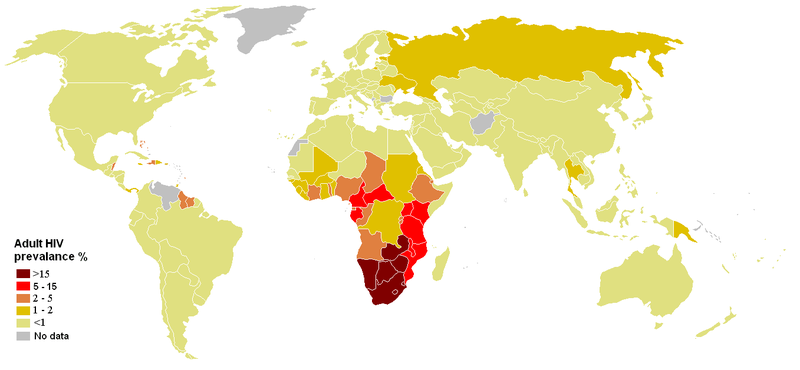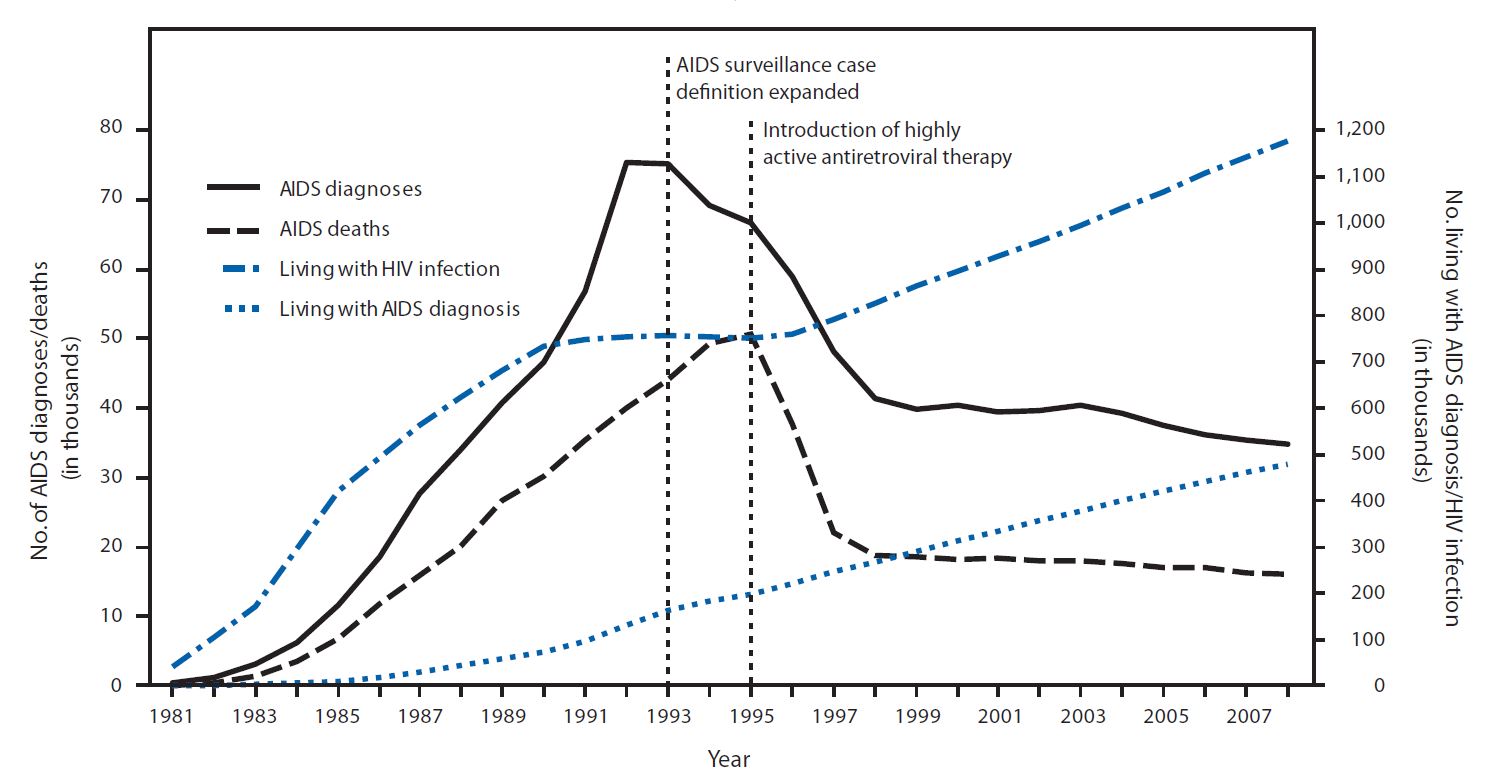In 1984, after the cause of AIDS was discovered, US Health and Human Services Secretary announced that a vaccine for HIV would be available in two years time. Three decades later, more than eighty clinical trials and over thirty prospective vaccines to date, the virus is still winning!

HIV/AIDS distribution around the world as of 2008. Image from Wikimedia Commons
Why is it such an impossible task to create an effective vaccine against HIV? A task that seems to have disheartened many researchers from striving to find the solution to a persistent pandemic! Without a cure for AIDS, a vaccine is the only way to slow it down. So far, a total of 78 million people have been infected with HIV and although the number of new infections per year has dropped from 3.4 million as recorded in 2001, it has stagnated at 2.1 million since 2013; a number that is still considerably high. Therefore, with millions of dollars being allocated to HIV vaccine research annually, why is a breakthrough still lacking?
Normally, vaccines are composed of a harmless form of the virus or parts of it such as surface proteins; these stimulate immune cells to produce compounds known as antibodies that bind a small part of the virus component called an epitope; the attachment deactivates the virus preventing it from invading healthy tissues and causing disease. Vaccines also activate immune cells that kill infected cells.
However, successful in controlling more than 30 most contagious illnesses, this vaccine is defective when it comes to HIV. This is because HIV like the common cold virus undergoes numerous errors when replicating it’s DNA. Therefore, HIV’s epitopes are very prone to changing. Due to the high specificity of antibodies and ‘killer’ cells, viruses that have changed epitopes cannot be deactivated by the same antibodies and ‘killer’ cells. This property of HIV makes it very challenging to create an effective vaccine. Despite being weakened, using live HIV as a vaccine is also gravely concerning; it could possibly evolve into a virulent form as the virus is constantly mutating. HIV particles are also by nature very different despite being incredibly mutable. This is because they descend from numerous ancestors. For an effective vaccine to be created, its breadth should be large enough to account for all HIV variants.
Another setback in the development of HIV vaccine is the fact that AIDS recovery is rare; vaccines are usually geared to mimic the immune response generated by our bodies after infection and recovery from the subsequent disease. In the case of HIV, the body cannot develop this immunity as HIV attacks immune cells. Lastly, HIV integrates its DNA with ours and becomes a part of us! This gives ‘killer’ cells a hard time detecting infected cells where virus assembly takes place. These factors among others are what have stalled HIV vaccine development.
Despite the challenges, we are all capable of taking preventative measures to prevent further spread of the virus. To learn more on how to protect yourself, click here.
-Jane Wanjiru

